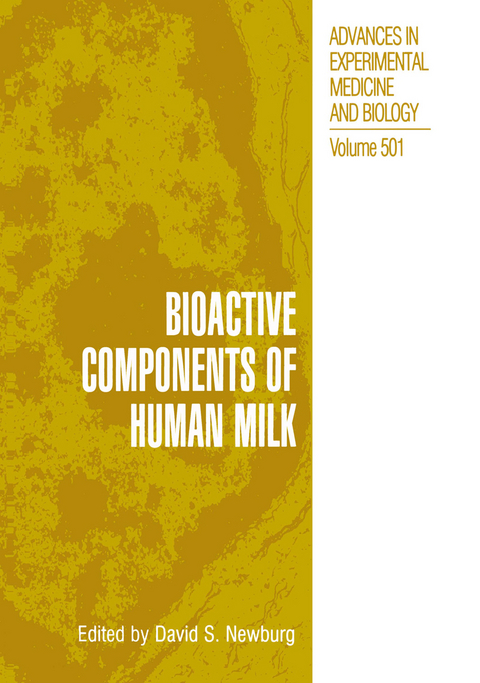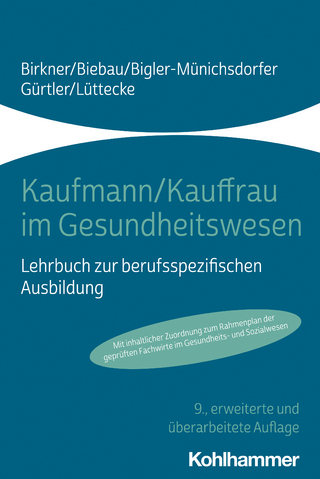
Bioactive Components of Human Milk
Springer-Verlag New York Inc.
978-1-4613-5521-2 (ISBN)
A major emphasis of this book, how- ever, is on defining what is known about components of human milk that inhibit common pathogens of the infant, those that have hormonal and/or cytokine activity, those that have immunomodulatory and/or anti-inflammatory activity, xenobiotics, and nutrients that are uniquely essential to early development. The topic of bioactive substances in human milk was explored in depth at the th 8 International Conference of the International Society for Research on Human Milk and Lactation (ISRHML) held at Plymouth, Massachusetts, October 25-29, 1997. This book contains the proceedings of that conference.
Dedication. Preface; D.S. Newburg. Section I: Introduction. 1. Bioactive components of human milk: evolution, efficiency, and protection; D.S. Newburg. 2. Human milk and the response of intestinal epithelium to infection; K. Bernt, W.A. Walker. 3. MUC1 and MUC-X, epithelial mucins of breast and milk; S. Patton, M.-G. Awardee. 4. Drug transport into milk; P.J. McNamara. Section II: Hormones & Growth Factors in Mammary Development and in Milk. Overview. 5. The transforming growth factors beta in development and functional differentiation of the mouse mammary gland; C.W. Daniel, et al. 6. Is milk a conduit for developmental signals? K.D. Nusser, L.S. Frawley. 7. Regulation of cell apoptosis by insulin-like growth factor 1; D.L. Hadsel, G. Abdel-Fattah. 8. Human milk contains detectable levels of immunoreactive leptin; R.E. Lyle, et al. 9. Induction of expression of branched-chain aminotransferase and alpha-keto acid dehydrogenase in rat tissues during lactation; S. DeSantiago, et al. 10. A low-fat diet but not food restriction improves lactational performance in obese rats; K.M. Rasmussen, et al. 11. Human lactoferrin in the milk of transgenic mice increases intestinal growth in ten-day-old suckling neonates; P. Zhang, et al. 12. Growth rates of a human colon adenocardinoma cell line are regulated by the milk protein alpha-lactalbumin; L.G. Sternhagen, J.C. Allen. Section III: Molk Lipids and the Milk Fat Globule. Overview. 13. Assembly and secretion of the lipid globules of milk; T.W. Keenan. 14. Prolonged breast-feeding (six months or more) and milk fat content at six months are associated with higher developmental scores at one year of age within a breast-fed population; C. Agostoni, et al. 15. Presence of carotenoid, an anticarcinogenic marker, in nipple aspirates postlactation; C. Covington, et al. 16. The anticarcinogenic conjugated fatty acid c9, t11-C18:2, or rumenic acid, in human milk: amounts and effects; R.G. Jensen, C. Lammi-Keefe. 17. Long-chain polyunsaturated fatty acid concentrations in human hindmilk are constant throughout twelve-month lactation; C. Agostoni, et al. 18. Parenteral infusion of a lactating woman with intralipid: changes in milk and plasma fatty acids; R.G. Jensen, et al. 19. Investigation of long-chain polyunsaturated fatty acid metabolism in lactating women with stable isotope techniques; H. Demmelmair, et al. 20. Structural and functional aspects of three major glycoproteins of the human milk fat globule membrane; J.A. Peterson, et al. 21. Anti-infectious properties of the human milk fat globule membrane; H. Schroten, et al. Section IV: Immunomodulatory and Anti-Inflammatory Agents in Milk. Overview. 22. Homeostasis of mucosal immune system: human milk and lactation; J. Mestecky. 23. Anti-inflammatory characteristics of human milk: how, where, why; E.S. Buescher. 24. Development of a topical vaginal microbicide: lessons learned from human milk; C.E. Isaacs, et al. 25. Does human lactoferrin in the milk of transgenic mice deliver iron to suckling neonates? L.H. Hanson, et al. 26. Changes in lactoferrin and lysozyme levels in human milk during the
| Reihe/Serie | Advances in Experimental Medicine and Biology ; 501 |
|---|---|
| Zusatzinfo | XV, 592 p. |
| Verlagsort | New York, NY |
| Sprache | englisch |
| Maße | 178 x 254 mm |
| Themenwelt | Medizin / Pharmazie ► Medizinische Fachgebiete ► Mikrobiologie / Infektologie / Reisemedizin |
| Medizin / Pharmazie ► Medizinische Fachgebiete ► Pädiatrie | |
| Studium ► Querschnittsbereiche ► Prävention / Gesundheitsförderung | |
| Naturwissenschaften ► Biologie ► Biochemie | |
| ISBN-10 | 1-4613-5521-4 / 1461355214 |
| ISBN-13 | 978-1-4613-5521-2 / 9781461355212 |
| Zustand | Neuware |
| Haben Sie eine Frage zum Produkt? |
aus dem Bereich


